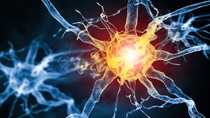Média
The nature of memory

Childhood memories, the first love, experiences at work: it is memories that put continuity in our lives and give us an identity. To enable us to remember, many areas of the brain need to interact.
We are who we are because of what we learn and what we remember,” the famous memory scientist and Nobel laureate Eric Kandel once said. And he added: “Memory is the glue that binds our mental life together and provides a sense of continuity in our lives.” Nowhere is that more apparent than in people suffering from total memory loss. They tend to feel as though they are permanently waking up from a long period of unconsciousness with no memory of what went on before.
Without recourse to memory, we have no ability to recollect the numerous episodes and experiences that make up our lives. The Canadian psychologist and retired professor, Endel Tulving, Ph.D., coined the term “episodic memory” for this part of our recollection system: “Episodic memory is the kind of memory that allows us to ‘mentally travel’ in time, and thus recollect our own past experiences, events we have observed and participated in,” says Tulving. We are aware of the content of episodic memory and can articulate it in words.
Without the ability to remember, our own conscious biography slips away from us. Not only that, we would be unable to perform mundane everyday skills like riding a bike and tying shoes. Procedural memory tasks like these, primarily involving the use of movement, are automatic and unconscious.
But how do memories arise in the first place? What we remember largely depends in the first instance on how much attention we are paying at the time. We are subject to a ceaseless bombardment of stimuli every waking hour. Because the brain’s capacity to process sensory information is limited, the main thought center of the brain separates the important from the unimportant. The part of our memory that is articulated in words only stores those things to which we pay attention. To be retained in long-term memory, an event needs to undergo a number of processing stages in the brain. “If, say, I take part in a wine-tasting session on a trip to South Africa, an autobiographic memory may emerge from this event,” neuropsychologist Professor Hans J. Markowitsch, University of Bielefeld, says. “The sensory input received during the wine tasting session enters short-term memory first of all.” Here incoming information can be retained for anything from a few seconds to a couple of minutes. “The information proceeds fairly rapidly from there to two circuits in the limbic system,” Markowitsch says. Once it gets there, the information is checked for possible resemblance to existing events and experiences and links are established.
In this process, the amygdala – essentially the emotional center of our brain – is responsible for emotional assessment and interpretation of the events. “Other areas of the limbic system subject the incoming information to social and biological assessment,” Markowitsch elaborates.
If the information is classified as important, the hippocampus steps in. One of the most famous patients in psychology, an American called Henry Molaison, illustrates the role played by this part of the brain: Removal of the hippocampus was one of the procedures performed to cure his epilepsy. Molaison’s epileptic seizures went away – but so did his autobiographic memory. Molaison was un-able to commit new events to memory. “The hippocampus is evidently one of the limbic system structures involved in transferring information from short-term to long-term memory,” Markowitsch explains. Autobiographic events are then primarily stored in the right cerebral cortex.
Thinking back to the wine tasting session in South Africa after a long time has passed will reactivate those areas of the brain that were significantly involved when the memories were created in the first place. Neuroscientist Professor Itzhak Fried, Ph.D., Medical Center, University of California Los Angeles, observed this phenomenon in a study right down to the level of single neurons. Recollection arises from the activity of the very same neurons that were active during the formation of memory content, Fried says: “In a certain sense, reliving past experience in our memory is the resurrection of neuronal activity from the past.”

Memories leave lasting traces in the brain. As early as 1949, Canadian psychologist Dr. Donald O. Hebb presumed that these traces are distributed among large groups of neurons. He summarized their exact nature in the succinct phrase: “Neurons that fire together wire together.” The story of the wine tasting in South Africa may again serve to illustrate Hebb’s model. Tasting the wine creates a number of impressions. As well as delighting in the wine’s fruitiness, you also receive sensory input from the setting in which the session takes place. The neurons repeatedly activated in unison while you enjoy your wine and appreciate the surroundings gradually become more strongly interlinked. During this amplification process, changes occur at the synapse or junction between two neurons. Simply put, the first of these two neurons releases more transmitters, such as glutamate, which migrate across the synaptic cleft to the second neuron. The transmitters facilitate communication between the neurons and the better connection enables the first neuron to activate the second one more easily as a result.
Later, the taste of the same South African wine may be enough to resurrect the wine-tasting session in your mind’s eye. American scientists recently published a paper in the journal Nature providing immediate proof that memory traces are laid down in this way. When the scientists weakened certain connections between neurons in their animal models, the animals were no longer able to recall an unpleasant event they had experienced.
For all the undisputed progress in memory research over the past decades, many unanswered questions remain: “For instance, we still don’t know if we can truly forget,” Hans Markowitsch says. “It’s possible that we simply can’t retrieve stored information because it has been shunted into the subconscious.”
He also says we don’t know whether forgetting is fundamentally due to disintegration of information or whether it may not in fact be due to superimposition. Advocates of the superimposition theory say that forgetting is when the retrieval of the content of a memory is disrupted by another. “In this process, new information enters the memory on an ongoing basis and gets mixed up with old memories, resulting in their modification or disruption of their retrieval,” Markowitsch says.
New research findings are reported almost daily, Endel Tulving says. His conclusion: “Yet the major insight gained from more than one hundred years of scientific study of memory may be the realization that the complexity of memory far exceeds anyone’s imagination.”

